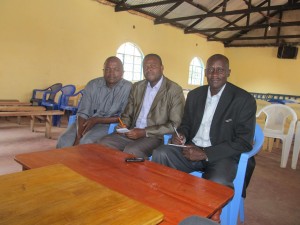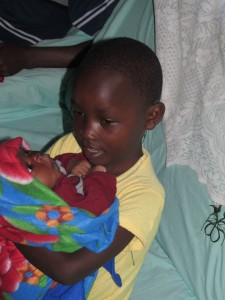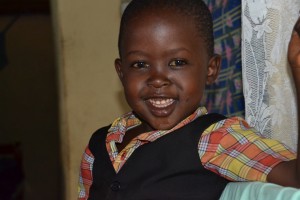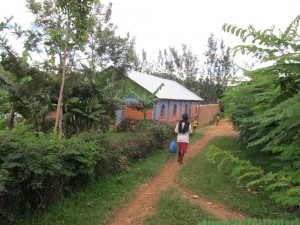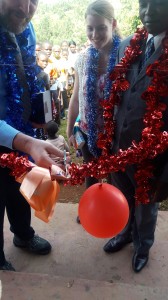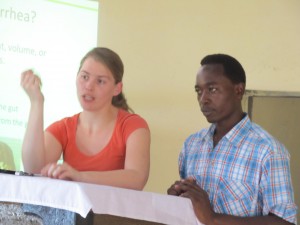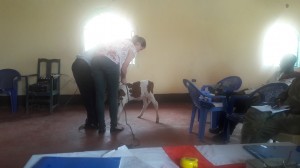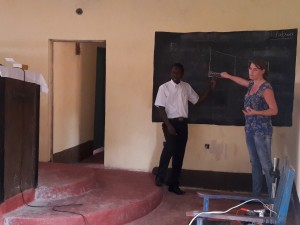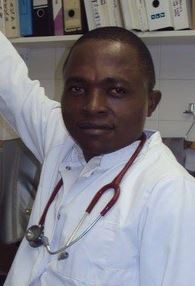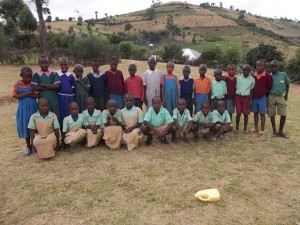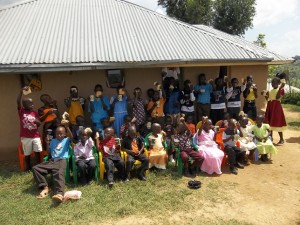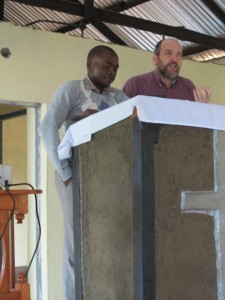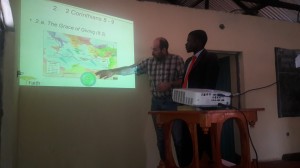
Tonnis Groenveld visitedKisii in November/December of 2013.
First he spent six weeks in Lokichoggio in the north of Kenya teaching a course for MERF.
We quote from his letter of December 13, 2013 to the ‘home front’
“The journey from Lokichoggio to Nairobi was by MAF airplane – sounds like true missionary work! From Nairobi to Kisumu our flight was in a bigger airplane, and from there we used local transportation. Jared was waiting for Harmke and me on the airport. From there we took a taxi into the city (we didn’t realise what a luxury that was then – three passengers in a taxi!). From there on multiple matatus. A matatu is a van (usually Nissan or Toyota – older models) that by Dutch standards holds eight passengers. That number was slightly exceeded here, peaking at 22 men and a large bag of onions also taking up a seat. Our luggage was tied to the roof with a rope (see picture). It is a little tight, being packed in for five hours, mostly bumpety-bump.
This was followed by an hour in a taxi, three men in the front, four adults and two children in the back and two children in the boot, almost buried under the luggage. Is that all accepted? No, it isn’t, and the police hold regular ‘checks’, but if they are given some money they just check the mirrors or something like that.
So, after a successful journey we arrived at our destination. Kisii is a hilly country. Quite different from Lokichoggio, everything is green, the soil is fertile and there is regular rainfall. Mostly corn and sugarcane are grown here. In other places, besides where we were, rice and not forgetting tea were also produced. Kenya is a major producer of tea, and it all comes out of Kisii.
Jared I met six years ago before Lokichoggio. He was then 25 years old and pastor of a small and young reformed church in Kisii. His knowledge was mostly gained through home study, the course given in Lokichoggio was his first (theological) education.
Since then we have stayed in touch. The church has grown, and Jared donated a part of his land to the church so that a church building could be built. He earns money as a farmer and besides that he works as a pastor, although he is not paid for that. In the meantime a church plant has formed at a three hours walking distance. Walking, since he has no transportation. He is saving up for a motorbike, which is (considering the condition of the roads) a practical form of transportation.
Harmke and I have been guests of Jared and Maureen for eleven days and also came in contact with many others. Many people could speak (a little or more) English, we didn’t speak Kisii, and my Swahili is not good enough for holding a conversation. But you have fellowship with the people; languages and cultures differ, but people are people, and God is the same to them and to us. You recogniseeach other as brothers and sisters.
We were there in a good time, there wasn’t that much work to be done on the land, they were waiting for the harvest. So, various members of the congregation were able to follow the course. I taught for six days, mornings and afternoons, in five days through the Old Testament, and on Saturday the letter to the Romans. I spoke English and Jared or someone else translated to Kisii. Very demanding but rewarding work; you could feel the desire of the people to know more. One woman said afterwards that she previously hadn’t really liked reading the Old Testament, but that had changed now. That’s what you do it all for.
Jared invests a lot of time educating church members, (trainee) leaders in particular. Also, from time to time, he teaches at a theological institute in Kisumu for a week. And he is sometimes asked by (pastors of) other churches to teach there. He was happy with the assistance I could provide that week.
The church also has plans to teach courses in the church building, to educate pastors and others in Kisii and beyond. One of the church’s projects is saving up for the build of accommodation next to the church to receive and house people who come for these courses. Little by little building materials are being bought in order to be able to realise this building.
The church services on Sundays are a mix of Kisii, English and Swahili. I was asked to give a sermon, but I limited myself to English. The singing is a feast, just as in Lokichoggio: when you sing you can’t keep seated, people start moving.
The congregation is small but active. Some church members have rented a piece of land together were they can grow crops. The proceeds are used to fund church projects: in the first place expenses they have for church services and other activities; and also for purchasing bibles. Those cost about ten euros apiece, which is too expensive for some church members. The intention is for each family in the church to have their own bible (in Kisii). Also, there are diaconal projects. The church cares for a number of orphans who go to school, which has considerable costs. The orphans weren’t present because they were on some kind of school camp (it was the start of the main holiday which continues up to the turn of the year). Besides this there is support for and education of families. Child labour is increasing in Kisii because people have many children but not enough food for the whole family. Children are then hired out to work, each month parents receive a small amount. It goes without saying that these children are often abused and put to heavy, dirty and sometimes dangerous work. Also they have food aid for Turkanas in Lokichar. Lokichar is located in Turkana, as is Lokichoggio, but about 300 kilometers further south. Many people suffer from famine in Turkana.
A third of the proceeds are intended for the building of accommodation for course participants.
I am impressed with the great amount of work that is done by a small number of people (besides their daily work). Often they experience opposition in their work (I have seen some distressing examples of that), but God blesses their work. Let us support hem through prayer, and if possible, financially. Fortunately, there is support from several churches. We said a warm and heartily farewell, which involved some tears. I hope to be able to return to Kenya in a few years and on that occasion I will certainly visit Kisii again as well.



